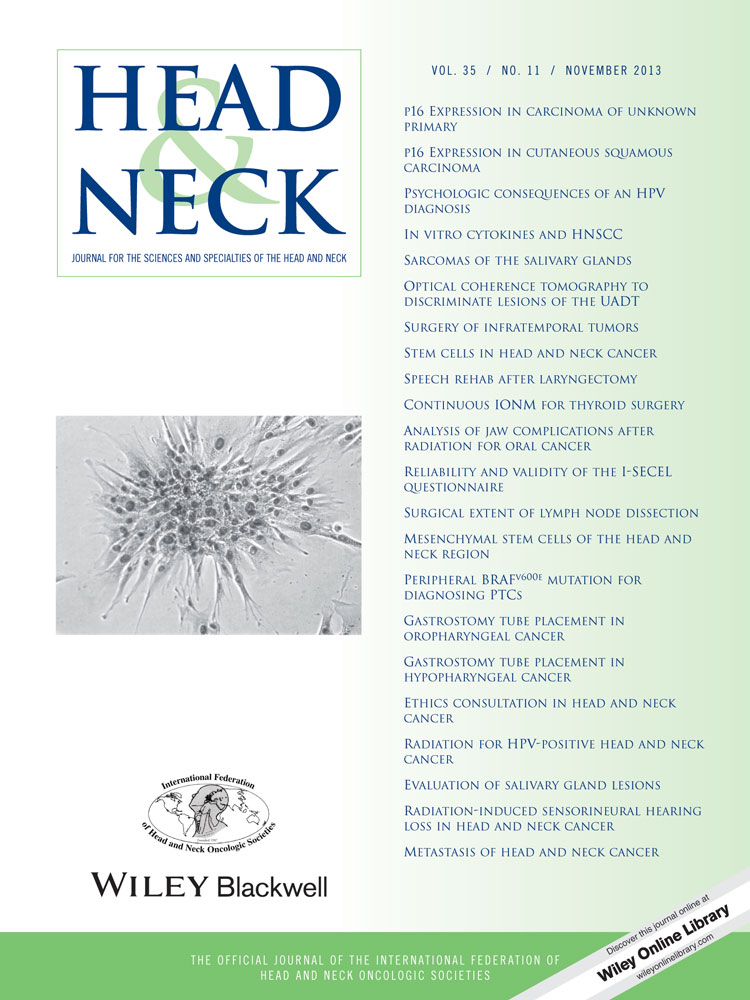In situ mantle cell lymphoma in the nasopharynx
Abstract
Background
Mantle cell lymphoma (MCL) is a B-cell neoplasm with an aggressive clinical course. Recently, an indolent type of MCL has been described under the term in situ MCL.
Methods and Results
We report a case of a 70-year-old woman who presented with nasal obstruction. A mass, located in the nasopharynx, was found. Histologic examination revealed lymphoid hyperplasia characterized by CD5 and cyclin D1–positive mantle zone cells, findings consistent with in situ MCL. Three years later, a new biopsy was performed, which showed the same histologic and immunohistochemical (IHC) findings to those observed in the first biopsy. The diagnosis of in situ MCL was confirmed by fluorescence in situ hybridization (FISH) analysis for t(11;14). Since then, the patient has remained free of an overt lymphoma.
Conclusions
In situ MCL may be observed in the nasopharynx, and it would be appropriate to perform cyclin D1 immunostain in cases with marked follicular hyperplasia accompanied by clinical suspicion of lymphoma. © 2012 Wiley Periodicals, Inc. Head Neck, 35: E333–E337, 2013




